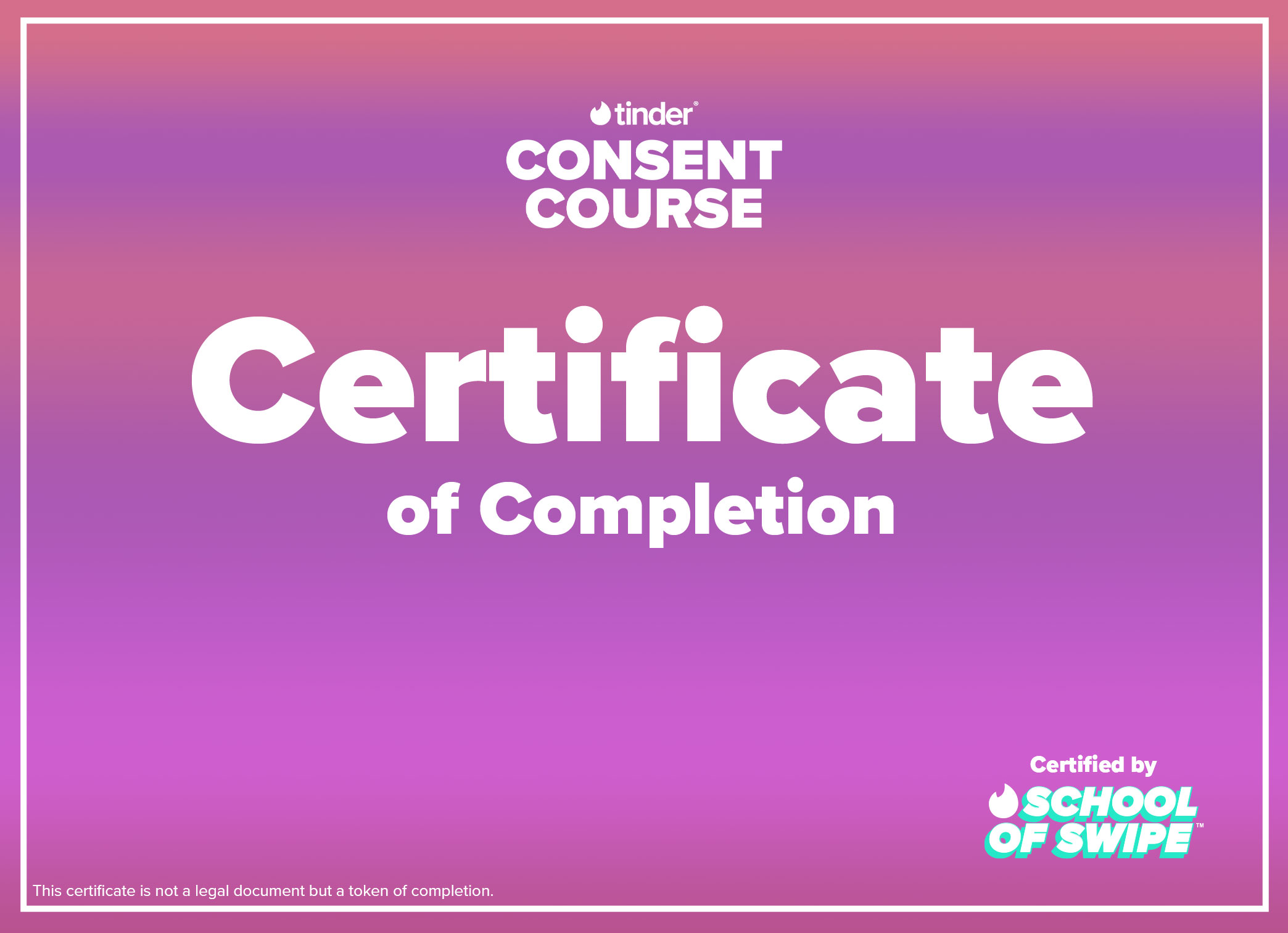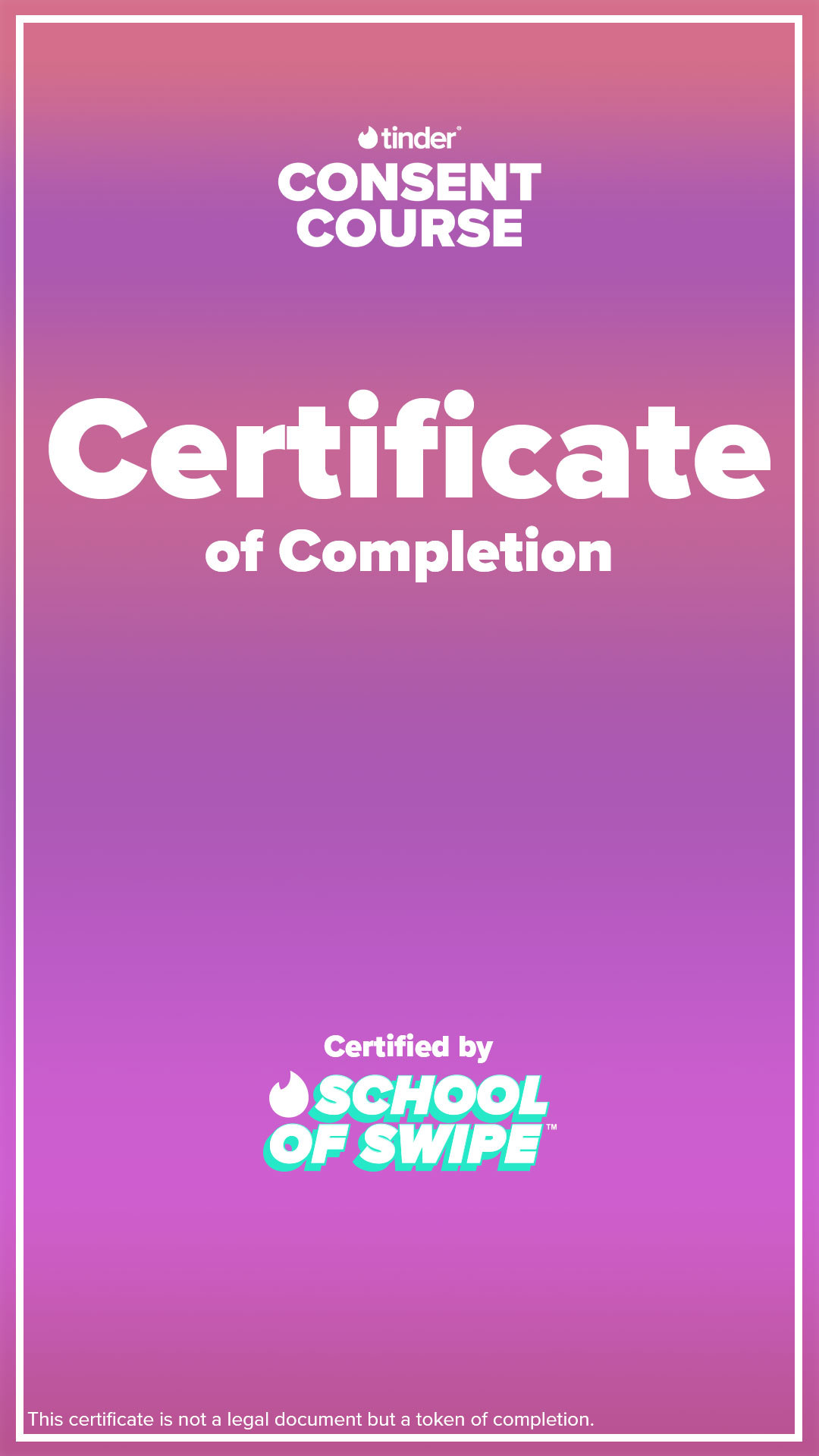





Welcome to the Tinder Consent Course
This course is designed to enhance your understanding and application of consent in personal and social interactions.
Throughout the course, you'll encounter engaging content featuring insights from Chanel Contos, consent advocate and Founder of Teach Us Consent, and The Relatables, who will share real-life scenarios and practical advice to help you grasp the importance of clear and enthusiastic consent.
Together, we'll explore the nuances of consent, debunk common myths, and provide practical strategies to ensure respectful and positive interactions. By the end of this course, you'll be empowered to communicate more effectively, respect boundaries and promote a culture of consent in your community.
Let's get started!
Let’s Talk Consent
Hello and welcome to Consent 101!
In this course, we’re going to break down concepts relating to consent, boundaries and permission using relevant examples from everyday life. We’ll be using text and video lessons as well as activities and assignments to help you better understand consent in a way that hopefully helps you improve the quality of communication as part of your relationships and dates.
In this course, you’ll be learning:
Consent can also be understood in terms like affirmative, implied, informed, and explicit. Some of these terms overlap with the types we will discuss. For example, affirmative consent can be both verbal and non-verbal. Another instance is that of enthusiastic consent which focuses on the enthusiasm of the “yes,” and periodically checking-in with a partner to affirm their consent. In most states in Australia, affirmative consent (the active presence of a yes rather than the absense of a no) is required by law. Even if this is not the case in your jurisdiction, we still always encourage you to use this form to ensure everyone is comfortable . All these terms bring in nuance to the idea of consent, and can overlap. However, in this course, we will focus on four types of consent – verbal, non-verbal, enthusiastic, and coerced.
We’ll also be laying special emphasis on the difference between classroom scenarios and real life, and delving into why consent can be easy to understand but more dynamic and complicated to practice.
So let’s begin!

What comes to your mind when you hear the word ‘consent’?
Before we get into a deeper understanding and definition of consent, we’d like you to think about the concept of consent for a minute - just really reflect on what you know about it and feel free to jot these down. What comes to mind when you hear or think about the term ‘consent’? E.g. permission, awkward, ask etc...
What are the top 3 things that come to mind when you think of consent?
What is consent?
Learn more about the key words associated with consent and the key concepts of consent in these downloadable resources.
Consent, Permission, Boundaries
Now that we’ve covered the basic definition and principles of consent, it’s time to drill deeper to understand how consent plays out in daily life - influenced by forces such as gender norms, age, conditioning, and power dynamics.When we ask people to tell us the first 3 words or terms that come to mind when they hear the word ‘consent’, as we did with you in the earlier activity, a common term we come across is ‘permission’. Indeed, the Oxford Dictionary defines consent as ‘permission for something to happen’ so it is accurate to associate consent with permission - but it’s also important to examine the relationship between the two words. And we’ll do that by reflecting on one simple question.
The question is: what are regular situations where you find yourself asking for permission? At home when you were younger, perhaps you ask your parents or guardian for permission to sleep over at a friend’s place, or to stay out late, or when you want to leave town. In school or university, perhaps you’d ask permission to be able to miss a class for an extracurricular activity or event.
Chances are that when you think of the term ‘permission’, the image that comes to your mind is an authority figure - and it isn’t necessarily a term you think of when you’re thinking about a friend, or a close relative, or a date or romantic partner.
Think of the first time you visited a close friend’s house - being unfamiliar with where the bathroom is, being reluctant to go into a room without them being present, and having to ask them when you want a glass of water. Now think of a friend’s house that you’ve visited multiple times and how you’d react to the very same situations. Often, the more comfortable you get with a place or a person, the less likely you are to seek permission, especially if it’s something you’ve done before. Of course, there are certain things that you’d still probably not do without permission - borrowing their vehicle, for instance, or opening a letter addressed to them, perhaps - and that brings us to the concept of boundaries.
While permission is an objective concept, boundaries are often subjective and personal. Imagine that you’re at a restaurant with some friends and have ordered a burger, some chips and a soft drink. Picture somebody picking up one of your chips and eating it themselves. Now picture that person picking up your burger and taking a big bite, or gulping down your drink. And now try to picture the person who is eating your food in this situation - picture a close friend, a teacher, a co-worker or classmate, and then a complete stranger. Chances are you would probably have a very different reaction depending on the action and who the person in the situation is too - these different reactions are directly related to your boundaries as a person, and the kinds of boundaries you have with different people in your life.
Sharing food is just one broad example - it’s a peeve for some people, and not a big deal for others. How do you react when someone pulls out their phone and tries to take a picture of you - do you pose or instinctively try to hide your face? Are you comfortable with physical touch as a form of affection with your friends? Does being shown affection in public places make you feel awkward or nice? How do you feel when someone else is holding your phone in their hands? We’ve seen that different people answer these questions differently, and have different tolerance levels to the same stimulus.

While talking about consent, we try to focus on the concept of boundaries more than the concept of permission - that’s because it is instrumental to understand that it’s okay for different people to have different boundaries, and even if we don’t have the same boundaries as someone else, we can still choose to respect their boundaries. We do this because it’s more important for us to be kind and make the other person feel comfortable than it is for us to rationalise their behaviour or try to find a logical answer for it. Consent is very much the same. The ramifications of violating consent or permission in a sexual situation are much higher than someone taking a bite of your burger without permission, which is why certain situations require much more nuance and care.
Sometimes if you’ve been chatting to someone for a while on Tinder, you can feel close to them even if you haven’t met. Whilst getting to know each other may result in feeling more comfortable with each other sooner, it’s important to remember that consent does not automatically transfer. Feelings and boundaries in person can change for different reasons. You may have spoken about plans online previously such as date activities, or romantic intimacy, but it’s important to check in with one another again in real life as boundaries are dynamic and changing.
The idea of Red Flags, Green Flags and Grey Flags

Now that we’ve established the concept of boundaries and talked about how subjective they can be, it’s time to learn about red flags, green flags and grey flags.
Before we go further though, it’s important to remember that while consent and boundaries can be very subjective, there are objective parts to it as well, and certain things are complete no-nos. Unprompted physical or verbal violence, or practices like stealthing (which involves removing condoms or other contraceptives without the knowledge of your partner), distributing, or threatening to distribute intimate photos or videos are NOT okay - this is a form of image-based abuse, and these are all illegal acts. Anything that violates your consent is absolutely not on in general, and while you are the ultimate decider of what you are or aren’t okay with, there are some hard boundaries too.
You’ve probably heard the term ‘red flags’ referenced by your friends, or in social media posts, or in movies or TV shows. Red flags refer to traits in a person that could make someone feel unsafe, uncomfortable or potentially be a warning to terminate a relationship. In the context of a romantic relationship, red flags could be signs that two people are incompatible, have different value systems, or something that could be a deal-breaker for the relationship.
Examples could be someone speaking or behaving rudely with waiters at a restaurant, or someone speaking excessively about their exes, or someone being pushy, coercive, or love-bombing.
‘Green flags’, in contrast, are traits in a person that make someone feel safe, secure and happy. In a romantic relationship, they could be signs of compatibility or encouragement to pursue the relationship further.
Examples include somebody being respectful of boundaries, someone being a good listener and not jumping to give advice, or someone who tends to introspect before putting other people down, and someone who's willing to go the same pace that you’re comfortable with in developing your relationship.
The world, however, is not always black and white - or in this case, not red and green. ‘Grey flags’, therefore, are things that could either be a red flag or a green flag depending on the context. These situations may leave you unable to make a decision on how they make you feel, and reveal themselves over time or with additional information and context.
An example could be someone who is being pushy about dropping you home after a date, but perhaps only being pushy because they’re worried about your safety, and perhaps you are hesitant to this offer because you don’t want them to know where you live yet.
The thing that we have to remember about flags of all colours, however, is that like boundaries, they’re subjective and differ from person to person. It is completely possible and also normal that something you consider to be a red flag is actually a green flag for somebody else. And understanding this difference of opinion is key to understanding consent and why it’s so important. The next activity will demonstrate what this difference in opinion could look like.
Activity - Reviewing the basics of consent

- If you’re very comfortable with somebody, you don’t need to ask for consent
- Consent should be knowing, voluntary and mutual
- Boundaries are objective, while permission is subjective
- As long as it’s not a no, it’s a yes
- When in doubt, ask instead of assuming

- Traits or behaviour that makes you feel unsure and leaves you wanting more information
- Traits or behaviours that make you feel uncomfortable
- Traits or behaviours that make you feel safe

- True
- False

- True
- False

- Consent is a knowing, voluntary and mutual agreement between all partners to engage in sexual activity
- Consent is a process wherein one person asks for permission to engage in sexual activity, and one person grants or denies that permission
- Consent is a one-time question by which you can gain someone’s trust and acceptance to engage in sexual activity


Always ask, never assume
Verbal, non-verbal and affirmative consent

While asking for consent, verbally asking is the best and most simple way to do it - simply asking “Can I kiss you?” or “Can I do that?” leaves very little room for misunderstanding. It’s important to remember here that someone who is drunk or inebriated is not capable of giving voluntary consent, and if you have to keep following up or trying to coerce someone into giving their consent, that doesn’t count as consent either.
It also counts as coercion if there are significant power dynamics at play - if the person you’re asking for consent happens to work for you, or could otherwise be potentially affected if they choose to say no, then it can be more difficult to ascertain if their consent is of their own free choice, or if they are feeling pressured to not reject your advances because it could affect their professional future. In these types of situations, it is very important to be aware of power dynamics - and a good idea could be to very specifically ask somebody if they’re feeling pressured to say yes to you because of these power dynamics, and try to ensure to your best ability that this is not the case. Remember, if it’s not safe to say no, then yes doesn’t count.
Some signs of non-verbal consent could be nodding, pulling the other person closer, or enthusiastically participating once they’ve been asked for their consent. Signs of non-verbal denial of consent may look like someone shying away, being very tense, or not reciprocating physical affection.
Physical intimacy is meant to be exciting for ALL parties involved, and the model of ‘enthusiastic consent’ focuses on that excitement. You definitely don’t want to be the only one all fired up for a physical encounter while your partner is just going along for politeness - but more importantly, you don’t want to misread signs and end up hurting or unintentionally assaulting someone. That’s why, it’s not just the absence of a ‘no’ that counts as consent, it’s the (affirmative) presence of a ‘YES!’.
Virtual intimacy is much of the same thing, and the same rules of affirmative consent apply whether it is taking a screenshot, asking before initiating a sexually charged conversation or sending intimate pictures.
Asking if a new sexual act is okay before proceeding.
Getting verbal consent before initiating physical touch.
Checking in with your partner regularly to see if they’re comfortable and feeling good.
Being vocal when you like something your partner is doing.
Ignoring your partner when they say ‘no’ FOR ANY REASON.
Not pausing or stopping when your partner is obviously uncomfortable or disinterested.
Judging consent based on someone’s clothing.
Accepting consent when your partner is inebriated.
Assuming your partner has consented to a new activity purely based on their consent to a different activity.
Initiating physical touch just because it’s happened in the past.
Continuing to ask for permission relentlessly until they ‘give in’.
Making your partner feel guilty for turning you on and not wanting to go any further.

Also, some things like erections or other signs of arousal might seem pretty obvious but DO NOT count as consent, since they’re involuntary. When in doubt, just ask!
It’s important to remember that someone might also be feeling pressured to not say ‘No’, even if they want to. Maybe they’re unsure but don’t want to be confrontational. Maybe they’re afraid of hurting your feelings, or affecting your relationship or friendship.
There can be many verbal and non-verbal ways of NOT giving consent. Some verbal cues that don’t involve the word ‘no’ could be:
 “This feels wrong”
“This feels wrong” “I’m not sure”
“I’m not sure” “Not now”
“Not now” “Can we go back to
doing that other thing?”
“Can we go back to
doing that other thing?” “I want to, but …”
“I want to, but …” “How about we just
cuddle for a bit?”
“How about we just
cuddle for a bit?”There can also be non-verbal cues like:
 Turning their body away
Turning their body away Looking tensed or worried
Looking tensed or worried Avoiding eye contact
Avoiding eye contact Silence
Silence Not participating in an act
Not participating in an actWhatever the case may be, always be mindful that the lack of a ‘no’ does not mean ‘yes’.

POV: Someone said ‘no’ to you
Now that we’re really getting into the finer nuances of how consent plays out in daily life, let’s talk about an often overlooked part of the process - dealing with rejection. While understanding consent is no doubt important, respecting consent is even more so.
Like you learned earlier, the world is not magically divided into people who breach consent and people who don’t - many times, consent breaches happen because of miscommunication or assumptions - or just because we don’t really know how to react when faced with rejection.
First up, remember that somebody who doesn’t want to engage in sexual activity with you is not obliged to give you a reason.
It’s a natural response to get curious and want to know why your advances may be being rejected, and that’s fine, but it is not something that is owed to you. If someone is uncomfortable sharing why they are uncomfortable, it’s best to give that person space and not prod them too much. You just have to trust that their reasons are valid to them, and their comfort is more important than your curiosity.
Secondly, even if you are presented with a reason, it doesn’t have to be something you agree with or even something that you fully understand. Remember what we learned while talking about boundaries - people have different levels of comfort with different things, and it’s important to respect those boundaries even if they’re different from yours.
You don’t have to live up to some perfect expectations of a human being when faced with rejection - rejection can hurt, and that’s perfectly okay, and sometimes the best thing to do is to remove yourself from the situation in case you’re feeling particularly emotional. But what you definitely should NOT do is be excessively aggressive, confrontational or coercive. The only consensual sexual experiences are those that are knowing, voluntary and mutual.
What’s more, we all face some form of rejection at some point in our lives - it’s totally normal, it doesn’t make us inferior people, and in fact responding well to rejection and trying to learn from it will only make you a better person. Don’t be too disheartened, take your space, DEFINITELY give the other person space, and figure out where to go from there.
What consent is NOT
We’re coming close to the end of this section - and by now, you’ve learned about various aspects, characteristics and nuances of consent. It’s time now to turn our attention to certain things that consent is NOT, or what might seem like consent but isn’t.
Consent is not perpetual, it is dynamic and ongoing: It is essential to recognise that consent is not a blanket permission that extends indefinitely. Just because someone consents to a specific activity once doesn't mean they automatically consent to it in the future or to different activities. Consent is situational and must be sought and given each time. A previous "yes" doesn't guarantee consent later on. Consent can be withdrawn at any time if any participants change their mind - even in the middle of a sexual act.
Consent is not transferable: Consent given in one context or with one person does not carry over to other situations or other individuals. Each new situation requires its own consent. For example, just because someone agreed to go on a date with you doesn't mean they consent to any physical intimacy or sexual activity later, or somebody may be okay with kissing, but nothing beyond that. Furthermore, consent that you got for an online act does not transfer to the offline world - it’s completely okay if your date was happy to send you an intimate picture but doesn’t feel comfortable being physically intimate with you IRL. Remember that when you’re in doubt, it’s always better to ask rather than to assume.
Drunk or intoxicated consent is not valid: Consent can only be considered genuine when it's given by a person who is of sound mind and capable of making informed decisions. If someone is under the influence of drugs or alcohol, they may not be able to provide clear and coherent consent. Engaging in any sexual activity with someone who is too intoxicated to know what they want is ALWAYS a bad idea, and can be understood as an act of sexual violence. There’s a difference between having a few drinks and being intoxicated, where an individual is acting in a way that they wouldn’t when sober.
Coerced consent is not real consent: Consent must be freely and willingly given. If someone feels pressured, manipulated, or coerced into agreeing to something, it's not true consent. Coercion, as we mentioned earlier, can take various forms, such as emotional manipulation, threats, or using a position of authority to influence the decision.
Silence or lack of resistance is not consent: It's essential to understand that silence or the absence of a clear "no" does not equate to consent. Consent must be explicit and enthusiastic. It requires active communication where all parties involved clearly express their willingness to participate.
Consent can be revoked: Consent is an ongoing process throughout any interaction. People have the right to change their minds at any point, even if they initially agreed to something. Communication and continuous checking-in are vital to ensure that all parties remain comfortable and willing.
Learn more about how to ask for, give and revoke consent with this downloadable resource.
Activity - Reviewing Consent in Real Life

- Because people in real life use their emotional mind more than their rational mind.
- Because people in real life always follow binary thinking patterns.
- Because people in real life are more open to communication about consent.
- Because people in real life have clearer boundaries.

- It avoids awkward situations.
- It leads to spontaneous moments.
- It ensures consent is genuine and enthusiastic.
- It eliminates the need for further communication.

- Intoxicated individuals are more likely to give enthusiastic consent.
- Intoxication enhances the ability to make informed decisions.
- Intoxicated individuals may not be capable of giving voluntary consent.
- Intoxicated individuals are more likely to remember giving consent later.

- The absence of a 'no' is considered consent.
- Both parties are equally enthusiastic about engaging in a sexual encounter.
- Consent is only valid if someone says 'yes' in a loud voice.
- Consent must be given multiple times to be considered enthusiastic.

- Convince and pressure the person until they change their mind.
- Give the person space and respect their decision without demanding an explanation.
- Assume the person is playing hard to get and continue pursuing them.
- Confront the person and demand to know the reason for their rejection.

- Always, as long as they didn't explicitly say 'no' before.
- When the person is inebriated and unable to respond.
- Never, consent must ideally be given for each new activity.
- Only if the person has been your partner for a long time.

- Nodding and pulling the person closer.
- Avoiding eye contact and looking tense or worried.
- Responding enthusiastically to questions about consent.
- Initiating a kiss.

- Power dynamics have no impact on consent.
- Consent given by someone with lower social status is more valid.
- Consent given in power-imbalanced situations may not be entirely voluntary.
- Power dynamics only affect consent in the workplace.


Staying safe while dating
We’ve spoken about all things consent and had the opportunity to explore, analyse and review concepts related to consent - and now it’s time to talk about something a little broader but very much connected to consent - safe dating.
Dating can be one of life’s great joys. That ‘butterfly in the stomach’ feeling when you’re meeting someone new, the excitement of not knowing where that connection will take you and whether sparks might actually fly. Being safe in all stages of dating - online and offline - can go a long way in trying to avoid consent breaches and any other unwanted situations.
Whether you’re getting started on your online dating journey, or resuming it after a hiatus, here are some things you can keep in mind:
While setting up your profile, don’t try to be someone you’re not - authenticity is attractive, and so it’s in your best interest to be honest about your pictures, age and interests. Age is an important one to be truthful about online, as consent must always be ‘informed’, this could skew someone’s decision making if in truth you are out of the age range that they are comfortable with being romantic with.
Be mindful about the information that you’re sharing online, and try not to reveal specific personal or financial information until you feel ready to trust that person with sensitive information. Remember, your privacy is your right.
Treat the people you chat with online the way you’d want to be treated - be polite, avoid asking intrusive or uncomfortable questions and be respectful of boundaries. If you’re hearing from someone else that they don’t like the way you’re treating them, even if it’s something you wouldn’t mind, then remember that boundaries are subjective and that if you want to continue a relationship with this person then you need to respect theirs.
If you feel like you’re experiencing bad behaviour, don’t be afraid to report it - dating apps are online communities, and your inputs could go a long way in preventing someone else from having a similarly bad experience, and you should always stand up for yourself .
Sexting, sending intimate photos, and talking about intimate acts are all natural on dating apps - but it’s very important to hold off on these things until you feel like you’re ready. All the rules of consent apply online too - so don’t feel like you have to be pressured into doing something, and never pressure the other person too!
Look out for red flags - lack of information, unclear photos or profile text that might be sexist, casteist, racist or otherwise inappropriate. While the majority of people on dating apps are looking for new connections, there are also people who might have created profiles with bad intent.
Get familiar with the app or platform safety tools and features - there are lots of things in there that could help you have a better experience, or deal with an unpleasant one.
Tinder also offers a range of safety features to help keep daters safe while using the app including Block Contact, Block Profile, Are You Sure and Does This Bother You, as well as a range of reporting options including long press reporting.
You can read more about Tinder’s top safety features here. We also encourage you to look at Tinder’s Dating Safety Guide for more information, resources and guidance for dating safely.
And when it’s time to take the leap from online to offline, here’s some stuff you should keep in mind:
Use technology to know someone better before meeting on a date, especially if you don’t have any mutual friends or connections - it could be as simple as a video chat, but do try to ensure that you’re meeting the same person you’ve been chatting with online.
Do take at least one close friend into confidence, and keep them informed about the person and when and where you’re meeting. Don’t be afraid of doing that mid-date call or text to let them know how the date is going.
For the first date, try to meet at a public place, and even better if it’s a place you’ve been before! This helps make the situation more comfortable, and provides an opportunity to really talk to someone and see if there are sparks. Avoid having first dates at somebody’s house, or too late at night.
Remember that you’re in control, and never feel pressured to do something you’re not comfortable with. Your boundaries matter, and as we taught you earlier, they HAVE to be respected. Own that, and don’t be afraid to voice it.
Dating is a two-way thing and needs to work for both parties. Don’t force it. And take the pressure off yourself. Today, relationships take many different forms. And you need to find what works for you.
Seeking out support in case of a consent breach

Consent and the law
Legal definitions of consent vary from country to country. Breaching someone's consent is considered a criminal offence under Australian law. Each state and territory have slightly varying laws. The best way to find the specifics for your jurisdiction is through a Google search.
You’ve done it!
Congratulations on completing this course - we hope that it has taught you some new perspectives on consent and that you’ll be more mindful about boundaries, power dynamics, safe dating and remembering to always ask instead of assuming!
Additional Resources
-
Dating Safety Guidehttps://datingsafetyguide.com/au
Want to learn more about dating safety? Take a look at our dedicated Dating Safety Guide
Add QR code -
Teach Us Consent@teachusconsent, www.teachusconsent.com
Teach Us Consent advocates for and provides holistic consent education through social media. The page has relevant and accessible resources related to consent.
-
Consent Laid Bare by Chanel Contoshttps://www.panmacmillan.com.au/9781760988128/
-
ReachOuthttps://au.reachout.com
helps young people feel better about today and the future
-
eSafety Commissionerhttps://www.esafety.gov.au
is the online harms regulator whose mission is to help all Australians have safer, more positive experiences online. In addition to resources on safer online dating practices, Australians can report image based abuse or serious adult cyber abuse.
-
1800 RESPECT (1800 737 732)https://www.1800respect.org.au
is the online harms regulator whose mission is to help all Australians have safer, more positive experiences online. In addition to resources on safer online dating practices, Australians can report image based abuse or serious adult cyber abuse.
-
Men’s Referral Servicehttps://ntv.org.au/
A men’s referral service for any men who are concerned about their own behaviour or need support.
-
Full Stop Australiahttps://fullstop.org.au/
A national organisation providing support, education and advocacy to ending sexual, domestic and family violence.
-
The Line - Our Watchhttps://www.theline.org.au/
A primary prevention, social marketing, behavioural change campaign run by Our Watch that helps young people to negotiate healthy and respectful relationships.
-
Australian Government - Consent Can’t Waithttps://consent.gov.au
Learn About Consent And Ways To Talk About The Topic With Others. Find The Resources To Check Your Understanding Of Consent And Talk With Others.
-
Department of Social ServicesConsent Policy Framework
for more information on sexual consent

All content has been authored by and curated in collaboration with our partners Chanel Contos and WESNET.




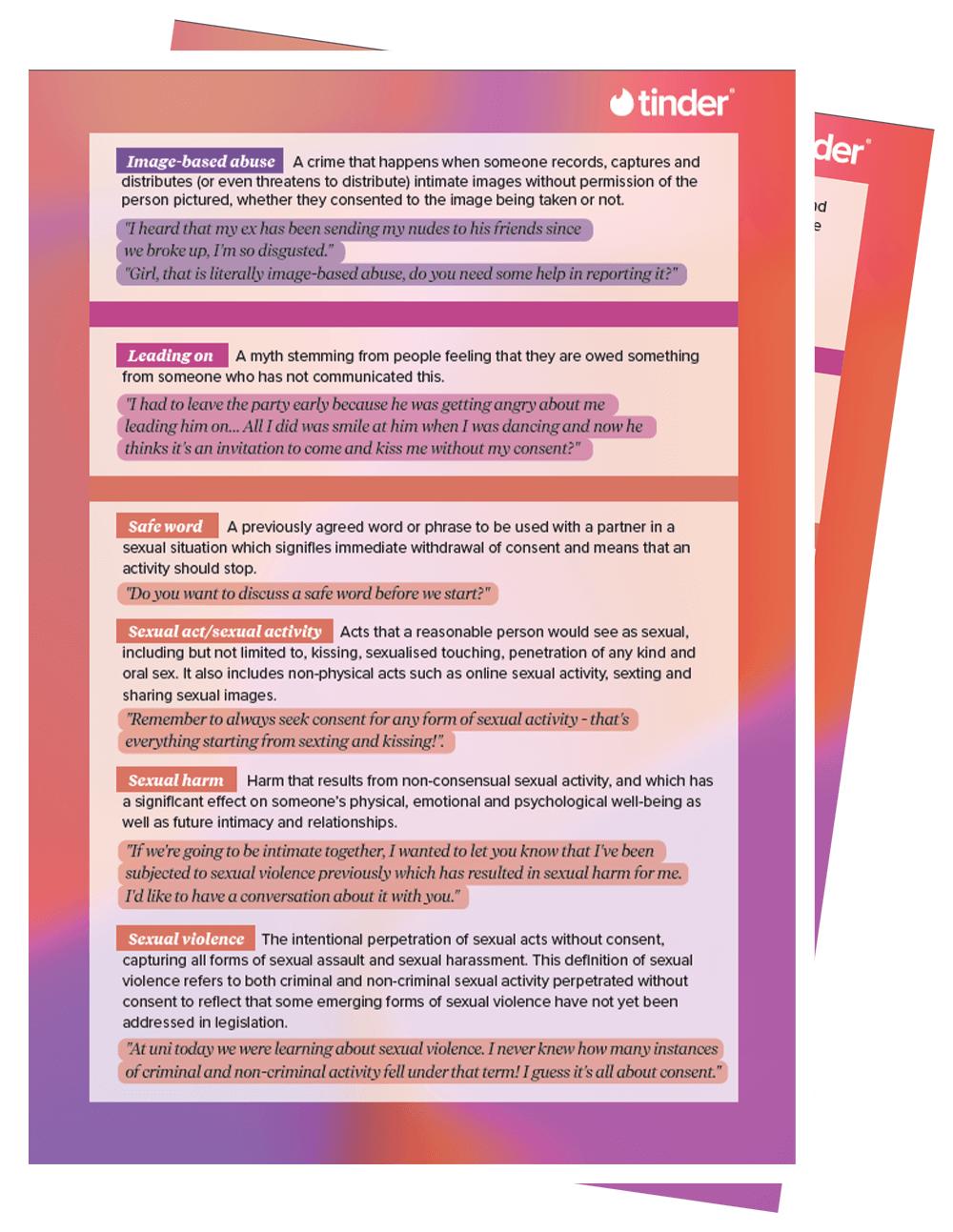
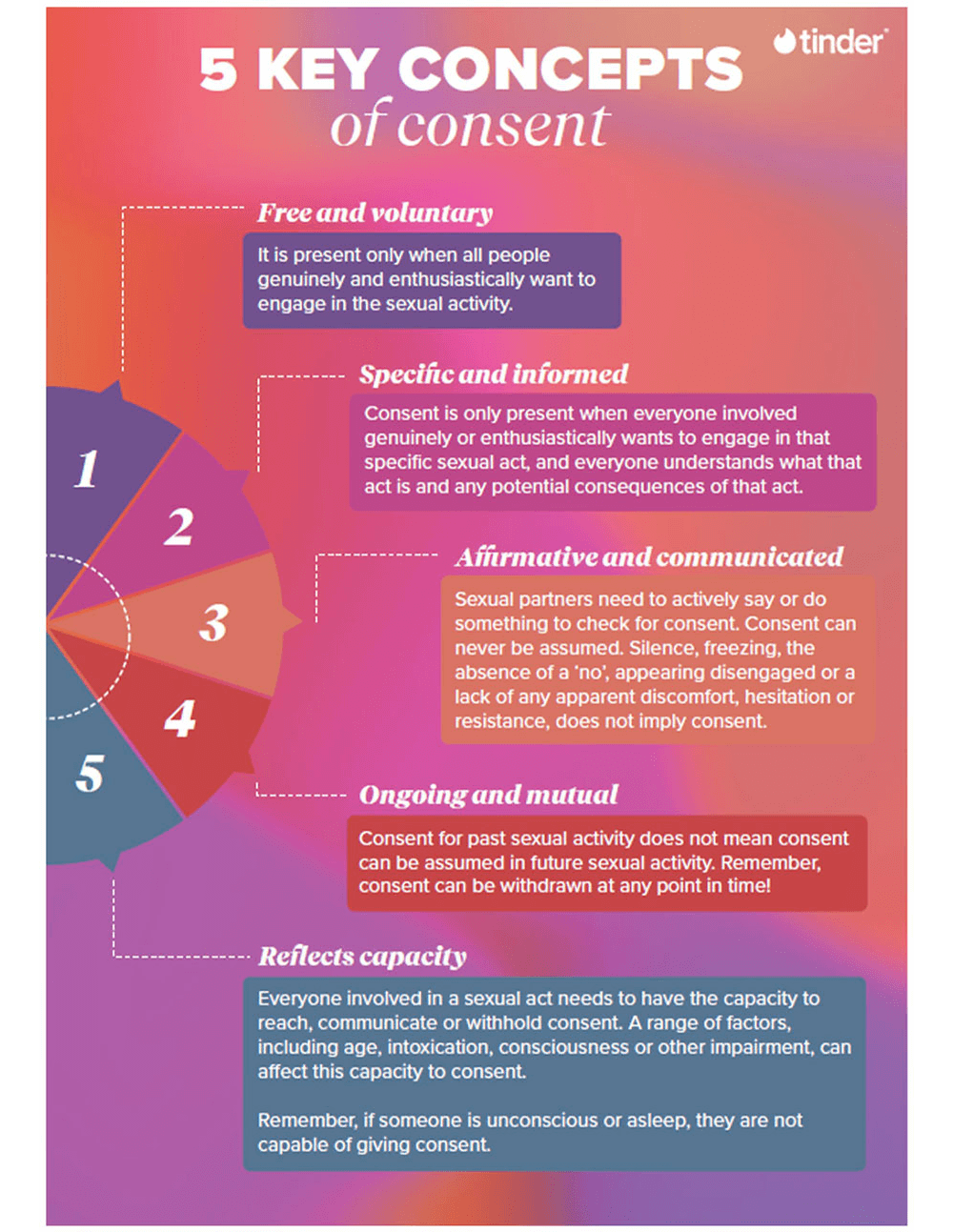
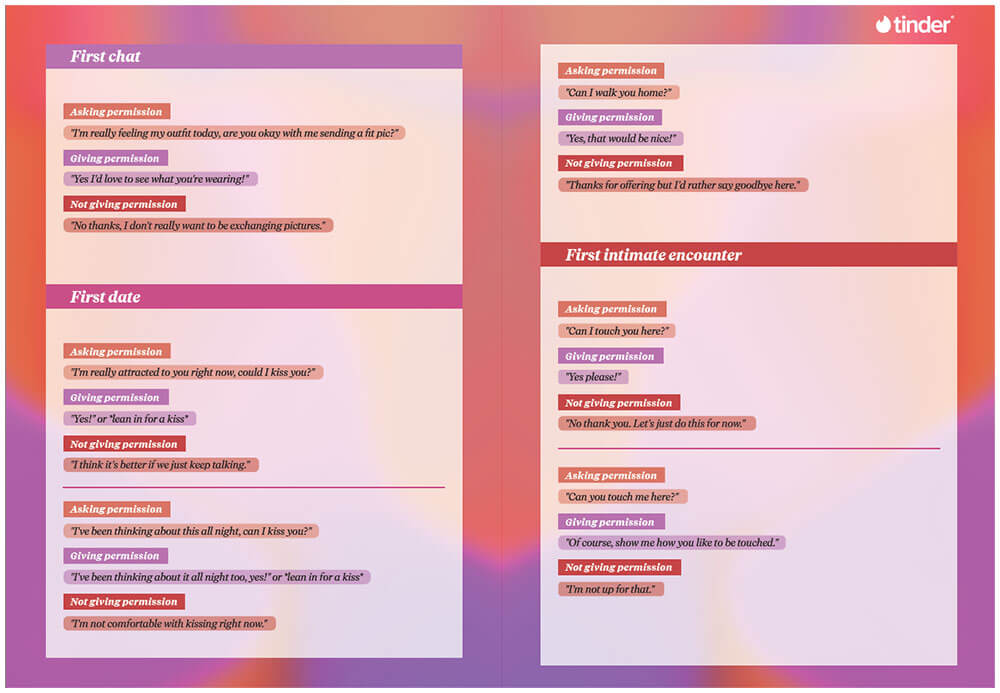


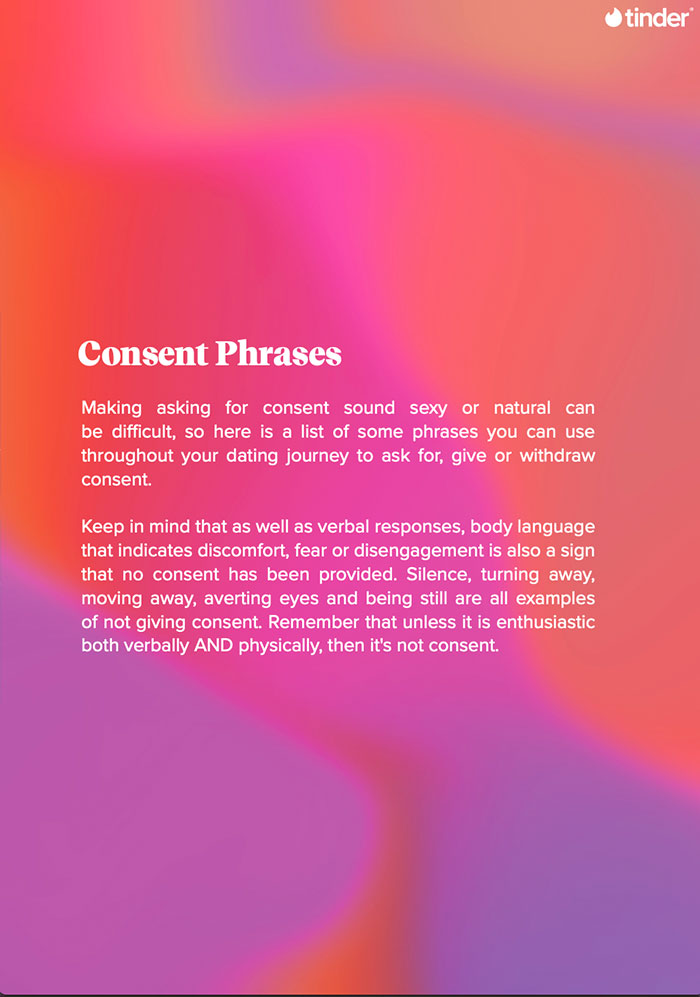
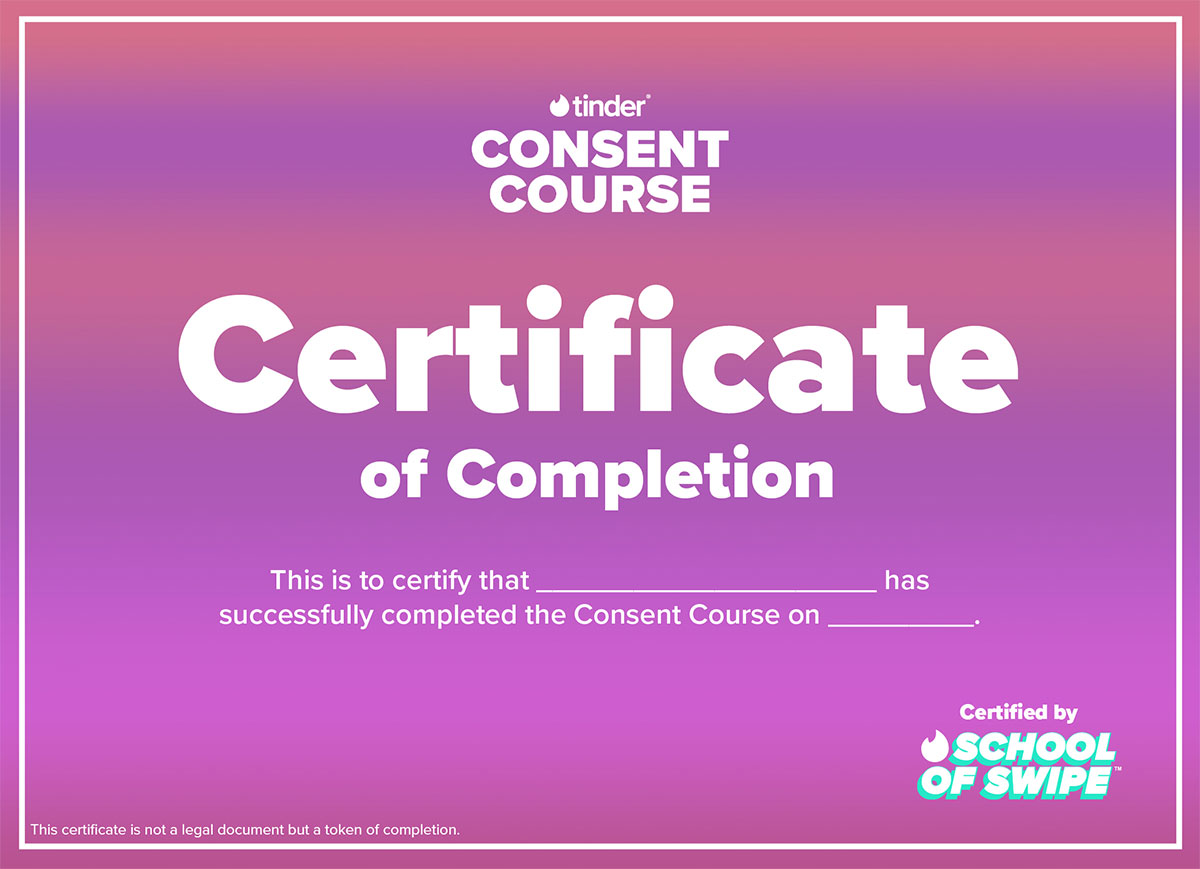
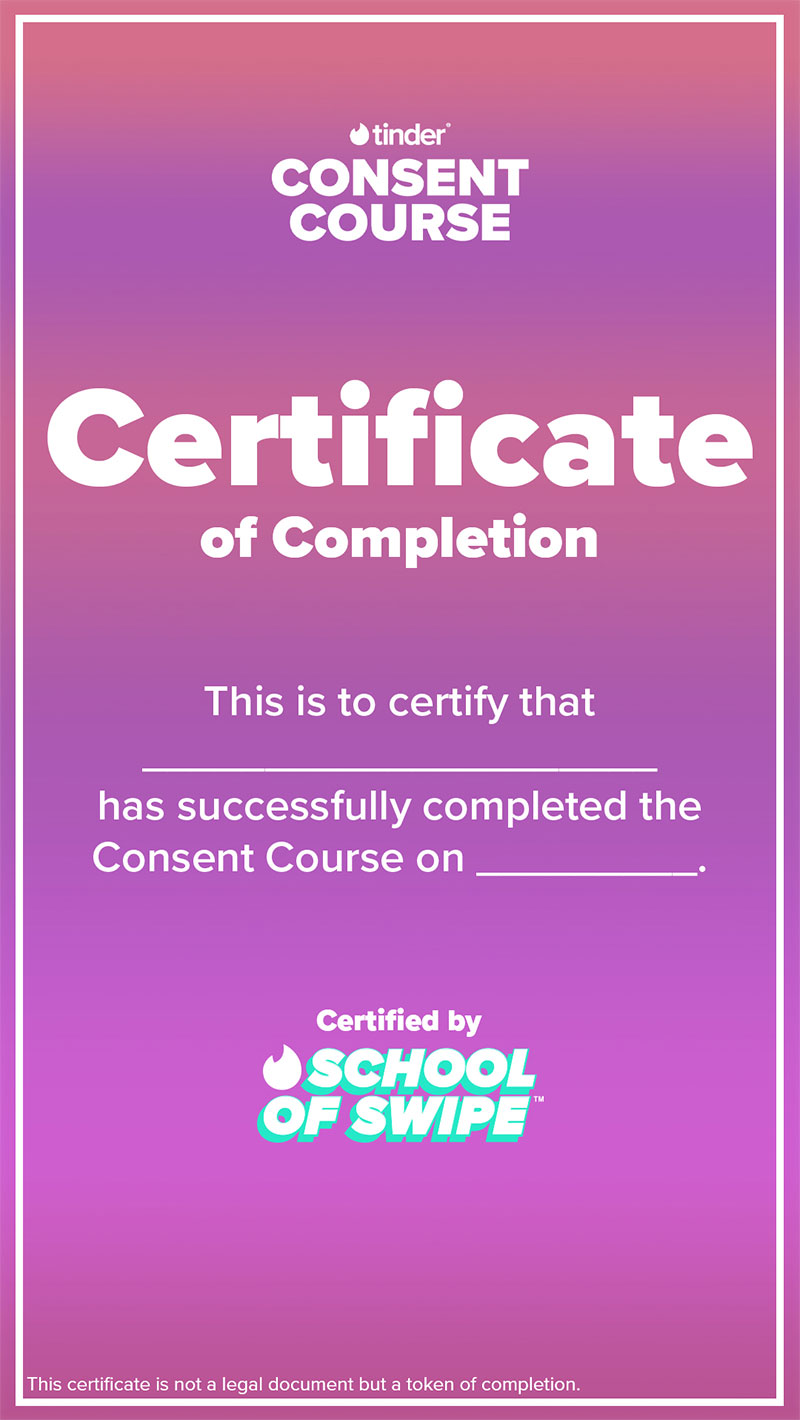
 Generating...
Generating...